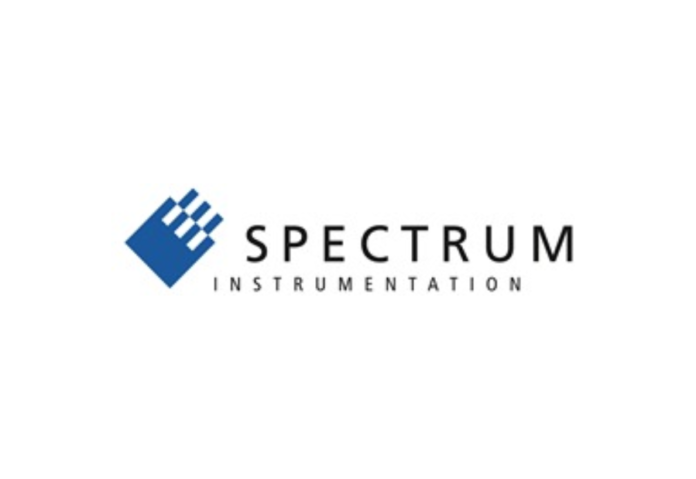COTS solutions store over 6 hours of data and perform continuous signal processing.
Bangalore, India, October 4, 2023: Setting a new standard for data acquisition, Spectrum Instrumentation has added a new streaming mode to its flagship M5i.33xx digitizer series. The mode allows these ultrafast ADC cards to continuously acquire, stream, and analyse data at a maximum sampling rate of 10 GS/s. The new capability enables the digitizers to be used with COTS (Commercial of the Shelf) PC technology, such as GPUs for endless signal processing and SSD arrays to create streaming systems that can record for hours on end.

The M5i.33xx digitizer family consists of seven different models, offering sampling speeds from 3.2 to 10 GS/s, 12-bit vertical resolution, and bandwidths from 1 to 4.7 GHz. The different product variants all feature a 16-lane Gen3 PCIe bus that is capable of transferring data at rates up to 12.8 GB/s. This market-leading transfer speed allows data acquired on one channel at a sampling rate of 6.4 GS/s or on two channels at 3.2 GS/s to be streamed directly to the PC environment without any loss of information. If faster sampling rates are needed, a special 8-bit transfer mode has been added that supports the streaming of data acquired at rates up to 10 GS/s on one channel or 5 GS/s on two.
Send data to a GPU for continuous signal processing.
For situations that involve streaming and intensive signal processing, the M5i.33xx series digitizers use SCAPP (Spectrum CUDA Access for Parallel Processing). The SCAPP software package transfers the acquired data, using an RDMA process, directly from the digitizers to off-the-shelf GPUs based on Nvidia’s CUDA Standard. Once there, users can utilise the GPU’s multiple (up to 10,000) processing cores and large (up to 48 GB) memory for on-the-fly parallel processing.
SCAPP includes a set of routines for interaction between the digitizer and GPU cards, as well as a set of CUDA parallel processing examples. These examples provide easy building blocks for powerful processing functions like digital down conversion (DDC), filtering, signal averaging, data demultiplexing, data conversion, or Fast Fourier transforms (FFTs). All the SCAPP software is based on C/C++ and Python, making implementation and customization easy with just normal programming skills.
For example, in applications that require continuous spectral analysis, time domain data can be collected at 10 GS/s and streamed directly to a GPU for non-stop conversion to the frequency domain. Using a system that includes an M5i.33xx series digitizer (switched to the new 8-bit mode), SCAPP, and a moderately priced GPU, a conversion process that involves multiplexing, windowing, FFT, and averaging with an FFT block size of 1M could run endlessly! At the 10 GS/s sampling rate, such an FFT will cover a frequency range from DC to 5 GHz and deliver a frequency resolution of 10 kHz. Larger FFT block sizes can also be used to produce even better resolutions.
Stream data to RAID storage for post-acquisition analysis.
The company also offers streaming and data storage systems based on a Supermicro server with an AMD EPYC processor and RAID storage using U.2 SSDs. With up to 240 TB of storage, these COTS systems can record an
incredible 6+ hours of data at the maximum 10 GS/s sampling rate. The acquired data is completely seamless.
with no gaps or missing information. Once stored, it can be inspected, partitioned, and processed. The systems provide a unique data logging capability at unprecedented speeds and over ultrawide frequency ranges.
PC systems with COTS parts
Oliver Rovini, CTO at Spectrum, said: “We’re always looking for ways to provide cost-effective solutions to challenging signal acquisition and analysis applications. By allowing our digitizers to interface directly with standard PC components, like GPUs and RAID-based SSD storage systems, our customers can benefit directly from the latest developments in the PC world. GPUs offer a great solution for processing-intensive situations, like those often found in imaging, communications, astronomy, spectroscopy, and aerospace applications, while storage systems provide a unique tool for anyone needing to monitor signals over extended time periods, such as those users involved in quality control, mapping, or surveillance.”
Software possibilities
To enable easy integration into almost any test system, the digitizers can be programmed with a variety of popular languages, including C, C++, C#, Delphi, VB.NET, J#, Python, Julia, Java, LabVIEW, and MATLAB. An SDK is provided that contains an assortment of programming examples and the necessary driver libraries for running with either Windows or Linux operating systems. For situations that require a turnkey solution, the company also has its own measurement software, SBench 6 Professional, which provides full card control along with display, analysis, storage, and documentation capabilities. SBench 6 is designed to handle large data files and has a number of processing tools, including a plug-in interface that allows the use of custom calculation functions as well as a variety of import and export filters.
The M5i.33xx series digitizers and streaming systems are available now. The new 8-bit transfer mode is part of every M5i digitizer card. For more information, please visit:
https://spectrum-instrumentation.com/products/families/33xx_m5i_pcie.php
Do Follow: CIO News LinkedIn Account | CIO News Facebook | CIO News Youtube | CIO News Twitter
About us:
CIO News, a proprietary of Mercadeo, produces award-winning content and resources for IT leaders across any industry through print articles and recorded video interviews on topics in the technology sector such as Digital Transformation, Artificial Intelligence (AI), Machine Learning (ML), Cloud, Robotics, Cyber-security, Data, Analytics, SOC, SASE, among other technology topics.






